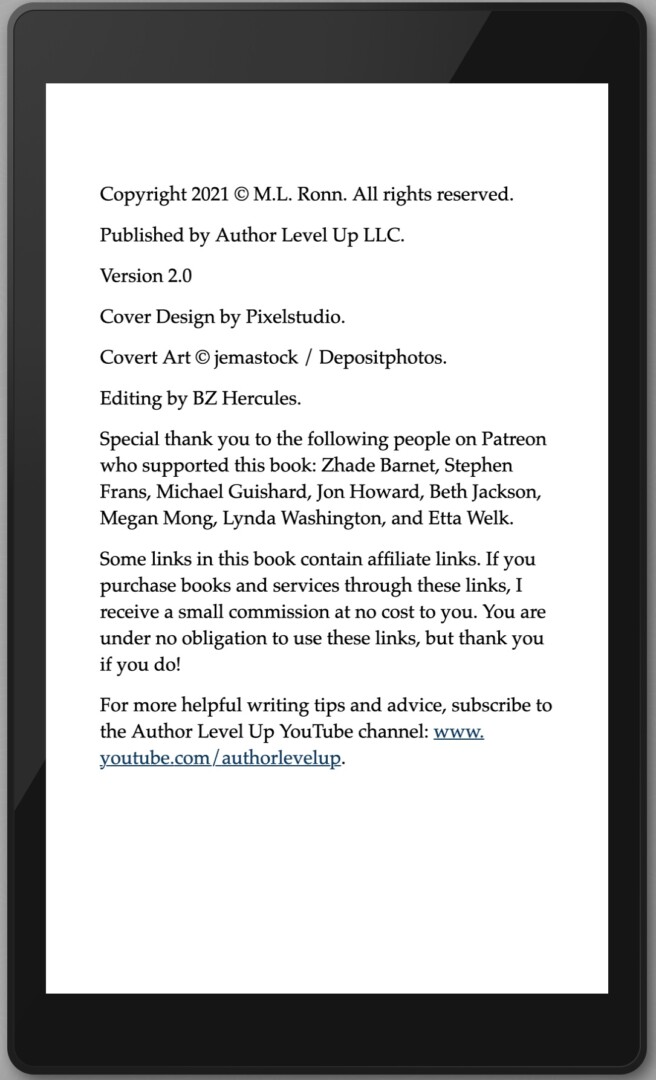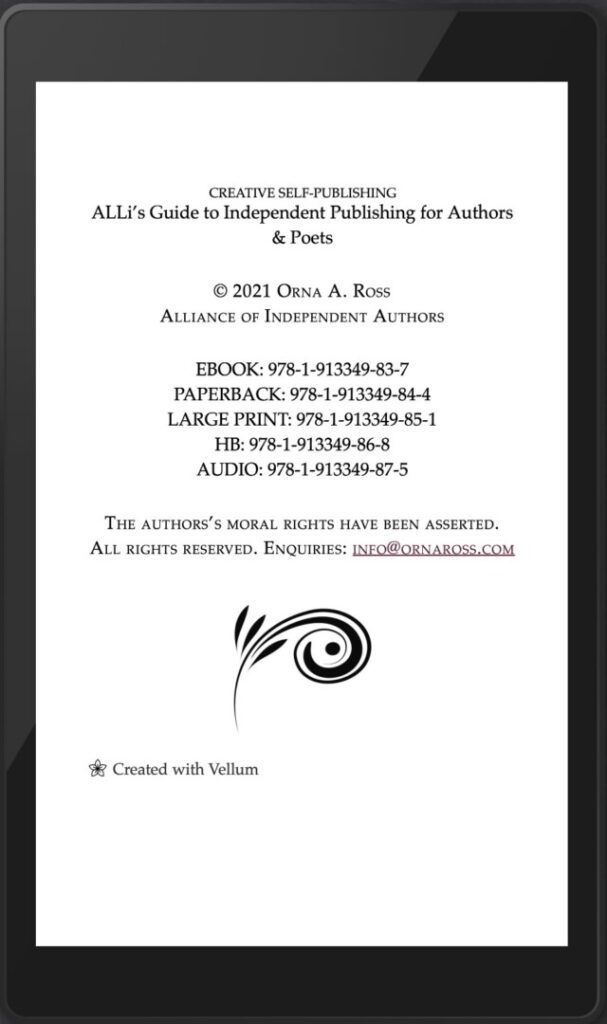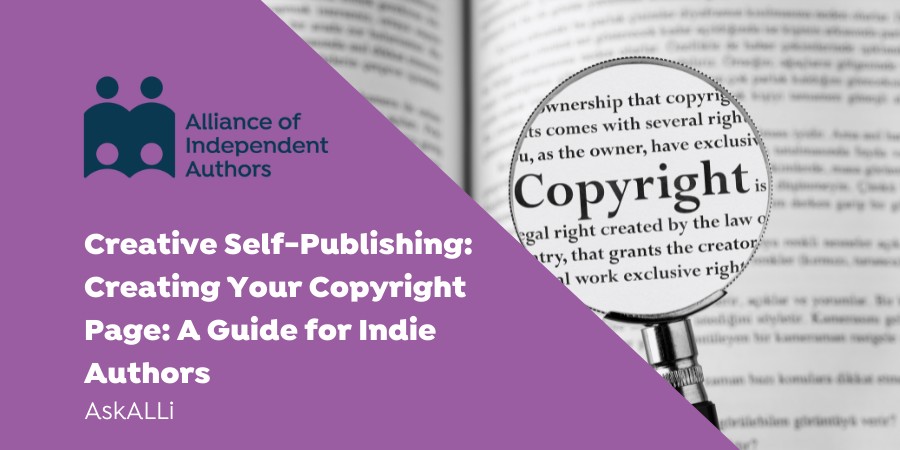You've finished a book! Hurrah. Now you need to publish it. Which means metadata, back matter, front matter, and… a copyright page. But what exactly is supposed to go in a copyright page? How much legal wording do you need and what are those key phrases? Today, the Alliance of Independent Authors discusses creating your copyright page.
Creating Your Copyright Page: An Introduction
The copyright page is a page found in most books, traditionally in the front matter, but now often in the back matter of the book. It indicates the copyright status of the book and is referred to by interested parties for information about the publisher. It may also include cataloging data for librarians. It also declares the copyright status e.g. “all rights reserved”, or “creative commons license”.
This page doesn’t assert your copyright, it is purely for information. Copyright is yours from the moment of creation. What it does is announce to interested parties that the work is under copyright, that you are the owner, and how you want your work to be reproduced or replicated.
A copyright page has one or more of three elements:
- a copyright notice
- a rights reservation statement
- a disclaimer
A Copyright Page Structure
Feel free to cut and paste anything below for your copyright page. Just remember to enter your own details, as appropriate.
The Copyright Notice
This declares to readers that you are the owner of the copyright. It has four components itself:
- The copyright symbol: ©
- The word “copyright”: Since the copyright symbol isn’t recognized in some countries, reiterate it as a word so that there’s no confusion.
- The copyright owner’s name: Your name or pen name.
- The year of publication: Take note that this is the year you publish the work (not the year that you first created it).
Together, it will give you the copyright notice, for example:
Copyright, © Orna Ross 2021
The Rights Reservation Statement
This statement informs the reader that rights are reserved under the copyright notice and should be respected.
The classic statement, which you’ll see in most trade publisher’s books, reads something like:
All rights reserved. No part of this book may be reproduced in any form or by any electronic or mechanical means, including information storage and retrieval systems, without permission in writing from the publisher and copyright holder, except in the case of brief quotations embodied in critical articles and reviews.
But given that the statement just reiterates the rights already granted by copyright protection and publishing contracts, others now feel this is overkill and prefer a shorter formulation. Something as simple as the following is sufficient:
All rights reserved.
You will also see (on this book, among many others):
All rights reserved. The moral rights of the author have been asserted.
The author’s moral rights are a feature of British law. This highlights the fact that there is no international copyright legislation. Different countries have different laws and, for example, the US and many other counties don’t recognize the distinction of moral rights.
The Berne Convention of 1886 is an attempt to get over these differences, an international agreement that mandated several aspects of modern copyright law, agreed to by all countries that are party to the Convention (fifty-one parties, including the US and UK, to date). They agree to mutually recognize the copyrights held by each other’s citizens—so the Convention provides for moral rights— the right to claim authorship of the work and to object to any mutilation, deformation or other modification of the work that would be prejudicial to the author's honor or reputation.
The Disclaimer
Disclaimers are not a full protection against being sued but they are widely used in book publishing. Here are some standard disclaimers, if your book requires one (not all books do).
- For Fiction: This is a work of fiction. Any resemblance to actual persons, living or dead, events, or locales is entirely coincidental.
- For Creative Nonfiction: This is a work of creative nonfiction. Some parts have been fictionalized to varying degrees, for various purposes, with some names, dates, places, events, and details changed, invented, and altered for literary effect or to protect the privacy of the people involved.
- For Memoirs: The events and conversations in this book are accurate to the best of the author’s ability, although some names and details have been changed to protect the privacy of others.
Copyright Notice Examples
Below are a couple of examples of copyright pages, one is more extensive than the other, including acknowledgments and editor information. The second example includes ISBNs which is helpful for librarians and book retailers who may want to order different versions of your books.

ML Ronn copyright notice

Orna Ross Creative Self-Publishing Copyright Page




